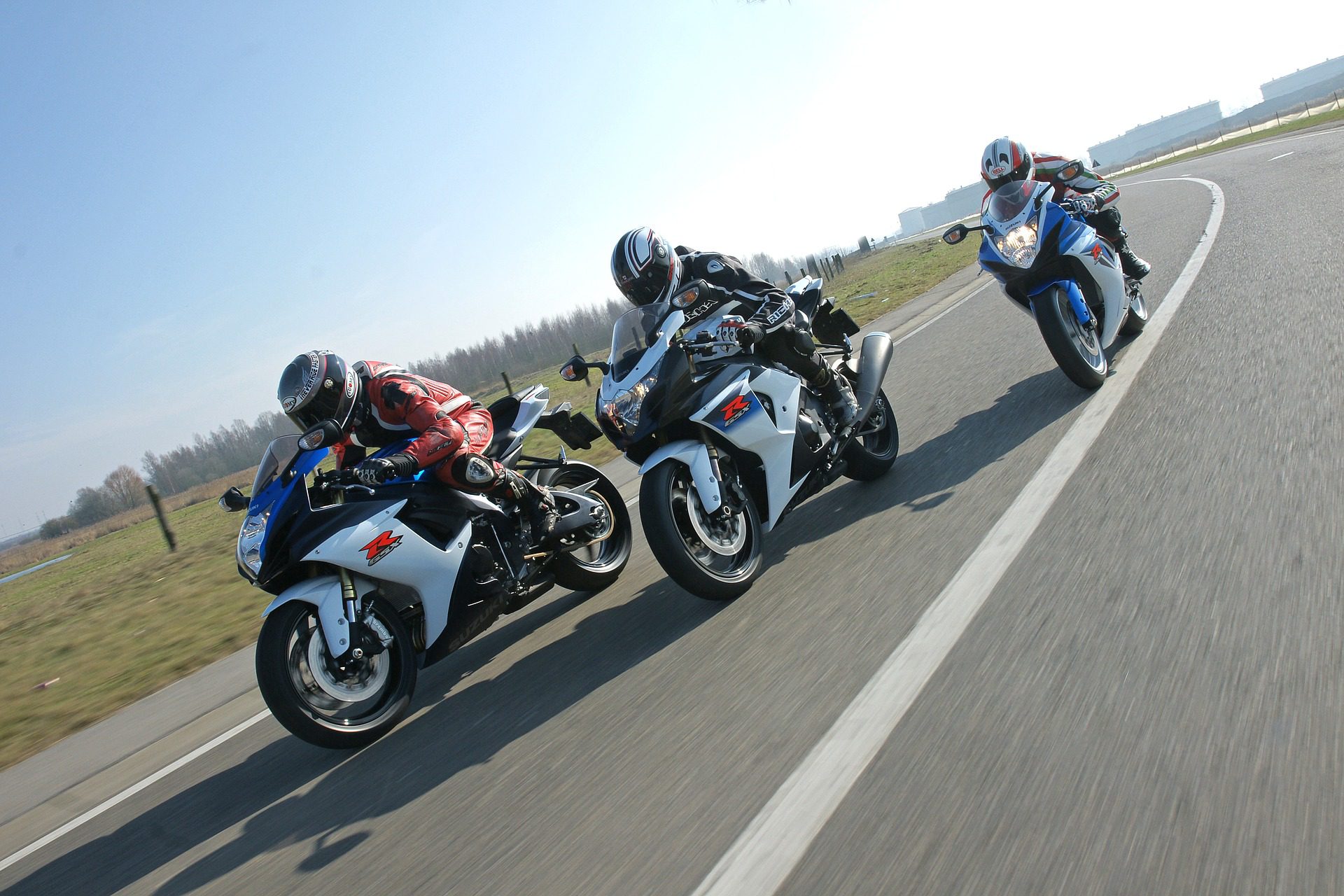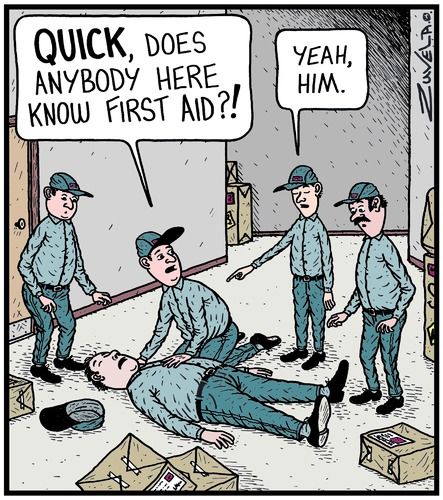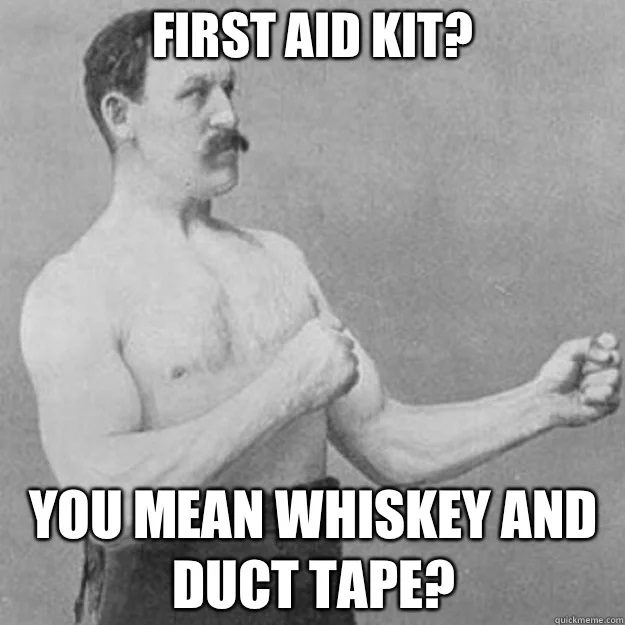This article was written in collaboration with Road Guardians, an organization dedicated to teaching motorcyclist first aid and accident scene management. While we consulted with experts, every situation is different. In the event of an injury, it is best to contact emergency services and follow their instructions.
It is a common belief among the more rebellious bikers that “It will never happen to me, I’ve been riding all these years and have never had a crash.” The type that wears a shirt, shorts, and sneakers while wearing a helmet, or those in the states without helmet laws riding without helmets at all. “It will never happen to me.” But, what if it does?
It is an unfortunate reality that a lot of group rides, while fully intended to be enjoyable rides spent in the company of others that “just get it,” more often than not are like magnets for accidents. As well, it is common in these rides that if an accident does happen and a rider is injured, that not many people are familiar with the actual correct first aid and management procedures to help that rider. It can quickly devolve into a hundred opinions without the correct one being stated, while a rider is down on the floor.
This is the reason that we’ve worked with Road Guardians to promote safe riding, either on your own or in a group. Some knowledge is better than none, and we’ve prepared the five most important, most essential tips & tricks to ensure everyone gets home safe.
#1: Ride Your Own Ride
The immediate response that many experienced riders will have to this statement is “Well, duh.” The immediate response many novice riders will have to this statement is “What do you mean?” There is a yawning gulf of space between those two reactions, and that is where the first aspect of group ride safety, before anything else, even first aid and accident response, comes in.
Ride your own ride is both a literal statement and a figurative statement to make you think. In the literal sense, it emphasizes that you, and you alone, are responsible for the act of riding your motorcycle. Ride responsibly and safely, and you stand a superb chance to make the ride home. Ride like a dumbass, and the pavement is just waiting to give you a hug.
In the figurative sense, it’s all about controlling your mentality. Be familiar with the route of the ride. Be familiar and realistic about your skill level. If the riders ahead of you come to a sharp left corner and are leaning over to 30 degrees and dropping their knee, don’t feel the need to emulate them. Think back to your MSF course, to SLLR: Slow, Look, Lean, Roll. Take the corner at a speed that means you’ll make it to the Roll On The Throttle part of SLLR, and you’ll both enjoy the corner a lot more, and not crash into the very uncomfortable guard rail.
#2: Have Multiple First Aid Trained Riders
The first thing that needs to be stated here is we are meaning certified first aid trained, not someone that’s watched five YouTube videos and proclaims themself a first aider. This is important for the reason that a certified first aider will, 9 times out of 10, be able to control an injury situation to the benefit of the injured. Incorrectly applied first aid can actually be detrimental to the injured rider!
With that out of the way, there are two primary reasons you want to have at the very least two or more correctly trained first aiders in the group ride. The first is that if one rider is injured and has multiple injuries, two trained riders can help that one injured person far more effectively as a team than someone on their own. If two riders are down, two first aiders mean each rider will get appropriate and prompt first aid.
The second reason is a bit grimmer but nonetheless vital. All you need to do to realize the importance of multiple trained riders is ask yourself a simple question: What if the first aid trained rider is the one injured and is unconscious? Always have a backup. Have built-in redundancies to cover issues before they become emergencies.
#3: Don’t Be A Dumbass
Now that we have your attention with that title, take it literally. Don’t come to the ride with your bike on the verge of falling apart. Don’t come to the ride ill. Don’t come to the ride if you’re recovering from an injury. All you will be doing is putting yourself, and by immediate extension everyone around you, at a higher risk of something bad happening.
If something bad does, in fact, happen, don’t worsen the situation. Don’t hop around screaming for someone to call 9-1-1. All you will be doing is looking like an ass, and raising the tension and stress of the situation. Instead, you need to take control of the situation and call emergency services ASAP. If there are other bystanders, relay clear and concise instructions as needed.
Also, if you yourself go down, even a low-speed lowside, or a drop at a stop, don’t shrug off getting checked out. The entire reason first aid trained people are along for the ride is to apply first aid. It takes all of five minutes to get a quick assessment, and while they may not be emergency aid trained, a first aid trained rider can quite quickly tell if something doesn’t feel right that may affect your ability to ride. It goes against every fiber of being a rider, the rebellious image, the skirting along the edge of danger… but suck it up and let them check you.
#4: Learn It, Live It: PACT
There is a simple acronym for the best way to handle a rider-down situation. It can be implemented in seconds, can involve multiple riders performing it, and ensures that a downed rider receives prompt and appropriate attention.
PACT:
- Prevent further injuries
- Assess the situation
- Contact appropriate aid
- Treatment of injuries
Perform it in the order above, and you will have helped your riding buddy. Have you ever wondered why when emergency services respond to an accident, they park their vehicles blocking a full lane or two of the road? It’s part of preventing further injuries and protecting the patients they are treating.
If a downed rider is not safe being left in the road, move them to safety carefully. While waiting for emergency help to arrive, you can begin to create a “safe scene.” Move motorcycles completely off the road and put their hazard lights on. Create a 100-foot area on either side of the crash to create a built-in buffer zone between traffic and the rider for a fire engine or ambulance to pull into to allow professional responders to provide advanced medical treatment beyond what first aid is able to do.
#5: Always Be Prepared
Hot day expected? Bring a backpack with two or three bottles of water, or wear a jacket with a water reservoir in the back and a drinking tube. Multiple hours of riding ahead? In that same backpack, throw a few high-energy snacks in, like granola bars, some healthy nuts like almonds in a Tupperware container, etc.
In terms of first aid, there are multiple types of first aid kits you can buy (or build yourself) that are oriented towards being highly compact and portable, while also providing all the essentials to treat rider-specific traumas. If you ride a bagger, put one in your bags. If you ride a sportbike, you can often get ones that fit in a jacket pocket or even under the seat.
Wear appropriate gear. Yes, you will hear that bashed into your head again, and again, and again by all the motorcycle sites, forums, and the like. To be honest, so what if you live in Florida and ride in your shirt and shorts? That’s why a lot of manufacturers in hot countries have developed mesh gear (especially from manufacturers in Italy where it gets insanely humid and hot in summer). You get 90% of the same airflow, with armor over the important bits. Hell, these days you can get armored hoodies!
And, finally, again touching on first aid, never ride angry. Yes, ride to relieve stress. Yes, ride to focus your mind and experience the feeling of the open air. But never, ever ride angry. Call it mental first aid. So what if the car ahead cut you off? Take a breath, roll off the throttle a little, build up a safe following distance, and continue along your ride, letting your moment of anger evaporate into the airflow through your helmet.
Let that idiot cut off whoever they want, one day it will bite them in the ass. And when that day comes, while they are sitting by the side of the road arguing with insurance, the police, having to organize a rental car, all that, you’ll simply be able to give your right wrist a little twist, feel that little vibration up through the bike, and ride off into the sunset with a huge grin on your face.
That’s why we ride in the first place.




